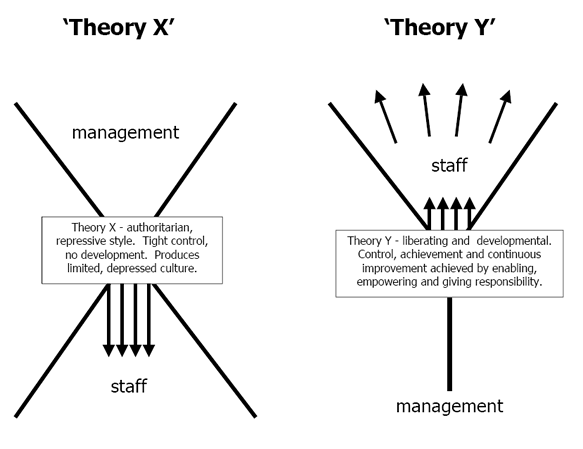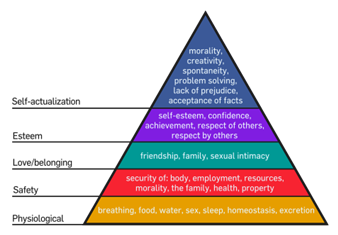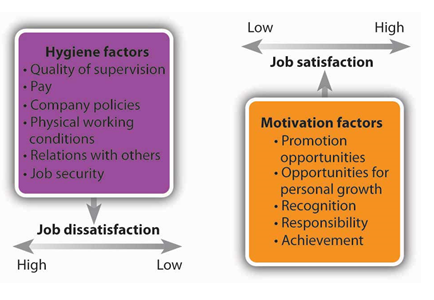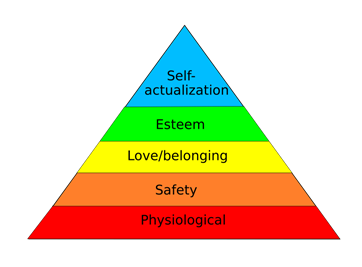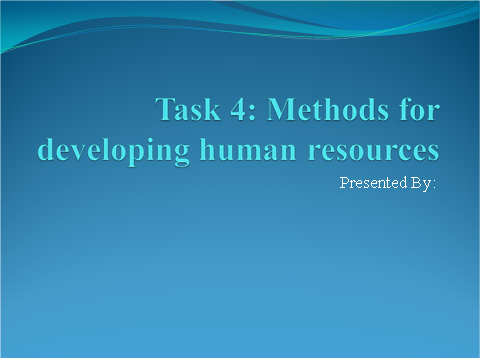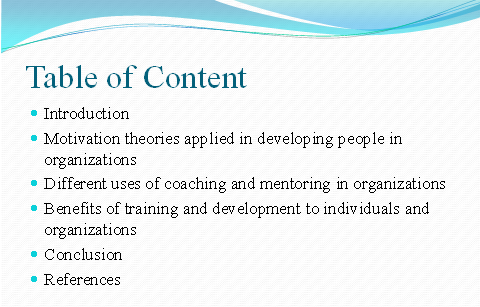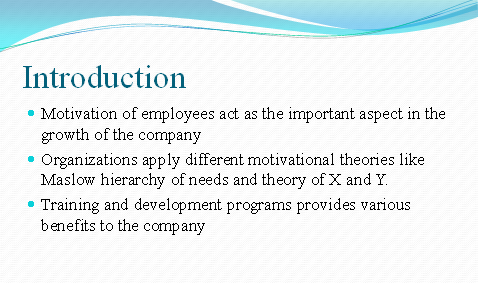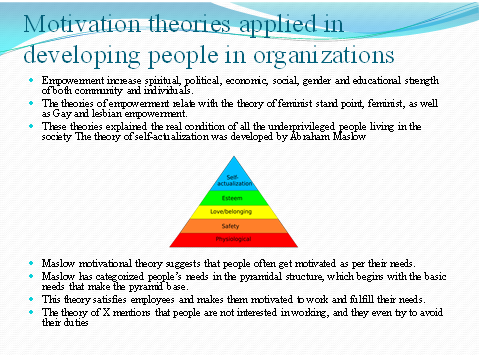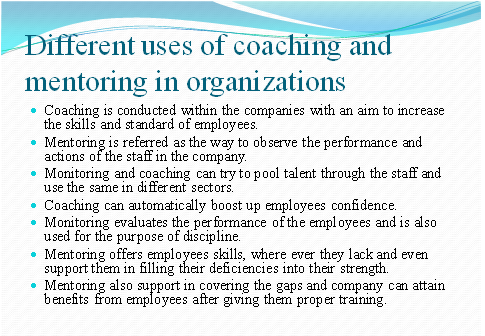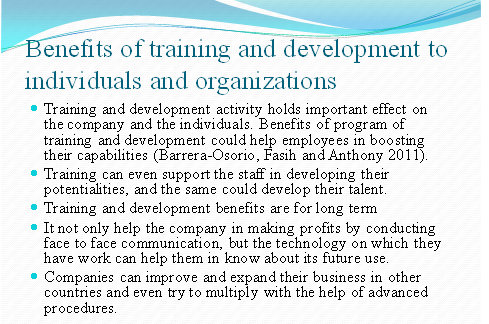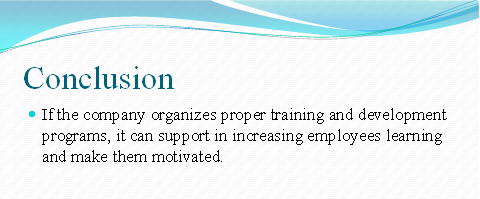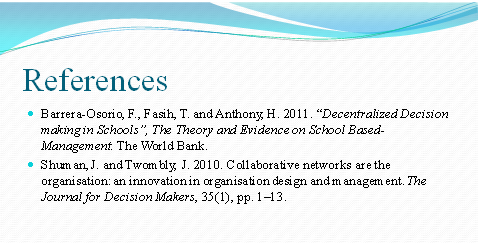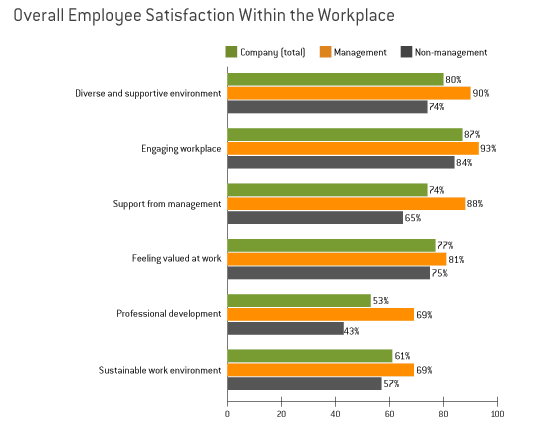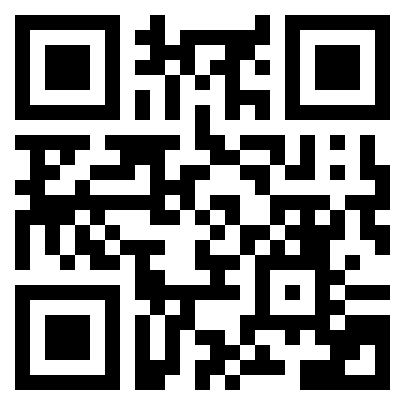Unit 5.3 People Management – Organizational Culture & Structure Assignment Assessment Answer

Introduction
In any organization employees are the biggest asset, and business success depends on the employee’s attitude and performance. Biloslavo, Bagnoli, and Figelj (2012) have argued that people management is a challenging task for any manager, and for that they need to motivate, lead, encourage, and inspire the employees. On the other side, they are also highly responsible for staff hiring, discipline, firing, evaluating, and training. These functions look less significant, but the successful manager can try to integrate both the negative as well as positive aspects of these activities to create a productive workforce. Therefore, it’s important that before recruiting the staff, a manager should try to justify and measure the candidate’s potentiality (Biloslavo, Bagnoli, and Figelj 2012).
Being the intern in ‘Global Business News’ magazine, I have given the task to discuss all the aspects related to HR, along with what could motivate the team and individuals and then link the same with organization management strategies. In the first activity, I will discuss the structure and culture that could affect people in an organization. In the second activity I will present a draft, focusing on HR and leadership. In the third event, I will introduce the presentation on the induction process. In the final activity, I will present various aspects of people management.
Stuck with a lot of homework assignments and feeling stressed ?
Take professional academic assistance & Get 100% Plagiarism free papers
Task 1: Understand how structure and culture on impact on people in organizations
1.1 Explain how organizational structure impacts on people in organizations
The organizational structure has a high influence on the corporate workforce. The ways in which employees are organized have a noticeable effect on every staff of the company. If the enterprise holds strong leadership, it will support other staff to get motivated and to get influenced by the work of their leader, and eventually they will also get motivated. The company impacts the person in a manner, that they manage themselves as per the requirements of the enterprise (Boehm 2012). It is expected that people should mold their skills, which suits their needs. There are many factors that might weaken or strengthen the ability of the employees in the company. The key factor is adaptability, which means how much the person can get adapted to the organization’s working environment. Other factors include social values, which means the value that could be maintained for the purpose of continuing the friendly relationship of employees with the employer and employee with other employees, as in this way the risk of conflicts could be reduced.
Boehm (2012) mentions that various organizations’ designs might shape the structure of the pyramid. The organizational hierarchy could rely on the hybrid function. The functional hierarchy provides various ideas as every business has a different perspective towards looking at features. In the 21st century, the business sector of USA was thriving, and during that period, industries were transferring from the job shop manufacturing towards the mass production areas, and the scholars like Frederick Taylor in the US and Henry Fayol from France has tried to come up with a mechanism for determining how the organizational structure works for higher productivity and efficiency (Boehm 2012). Before the sociologist from Germany, Max Weber has already discussed, that society tries to embrace capitalism and mechanization of bureaucracy, but it has little influence on the management of America due to the barriers of language. There are certainly positive and adverse effects on the behavior such as, colleague’s behavior that might impact the performance; employer-friendly behavior might motivate the employees, and organizational rituals and culture might motivate or de-motivate the staff (Boehm 2012).
1.2 Analyze how organizational culture impacts on people in organizations
Organizational culture is referred as an attitude and psychology that is communicated by the leaders. Organizational structure is considered a way of correctly organizing the employees along with the reporting structure of a company. This structure is similar to the structure of the organization and it even gets varied according to the type of business (Daniels, Radebaugh and Sullivan 2011). Organizations of various sizes have differences according to the layers; for example, huge companies apply different management layers, but in flat companies, they make use of fewer levels, in which managers hold an unusual degree of control.
Leaders communicate about the organization’s ethics, beliefs, and values that need to be incorporated in the company, and the same also includes work execution and attaining business objectives. In all the business levels that began with the strategies of the board room to the front desk employees, it depicts how the business is conducted; Values of fairness, integrity, and honesty along with that it also shows the employee’s capability to enhance the culture of the company. To do, organizations should try to implement the code of conduct, because, without the code of conduct, an organization might have a negative organizational culture.
Daniels, Radebaugh, and Sullivan (2011) explored that behavior and psychology depict how the employees do day to day tasks. Organizations even show the friendly and healthy attitude of the employees and for that, they are rewarded as per their performance, regardless of color, age, and race. On the other side, companies have aggressive culture and even lack humanity that might impact the environment in a negative way (Daniels, Radebaugh, and Sullivan 2011).
The organization has a high influence on the effectiveness and efficiency of the staff members. The organizational culture mainly supports in constructing the efficient staff, but it might harm the employee’s ability; therefore, it holds high influence. The companies with the proper planning structure as well as strong culture are most likely to come up with positive changes in the employees. If the company has established, and if it includes training, sit-ups with the managers, and conduct a discussion about the important matters then there is no doubt that the company will come up with efficient employees (Daniels, Radebaugh, and Sullivan 2011). For instance, if the company has an Entrepreneur resource planning system (ERP), then this will support the employees in better interacting with one another, and they could even save time and would be able to work more efficiently.
1.3 An explanation on how personal differences impact on individuals’ behaviors at work
At a similar workplace different individuals perform at distinct levels. The key ground behind the differentiated behavior of individuals at work is a personal difference among individuals. The personal differences of the individuals can be recognized in terms of their skills and attitude towards work. Few people have a positive attitude towards work and peer members while others have a negative attitude (Eby, 2012). The skills possessed by individuals are also the differentiation factors that affect individual behavior at work. The personal difference impacts work behavior of individuals as individuals having high-performance competence remain motivated while other do not remain motivated and satisfied in the same conditions. All these reasons provide a rationale to determine the way in which personal differences impact the work behavior of individuals at work.
1.4 An analysis of the management styles needed to deal with differences in behaviors
The differences in the work behavior of individuals are quite complex to be dealt with on the part of the management people. For such purpose the management people have to follow specific management styles. The first management style for such purpose is situational leadership style as per which the management evaluates the situation in which individuals have different behaviors and hence deal with that situation in such a way that all the individuals can have positive behavior in that situation (Sapru, 2008). Other than, the management follows a contingency approach that the management people use to deal with conflicts at the workplace and other negative situations.
Task 2: Understand approaches to managing on the differences between individuals that impact on their performance at work
2.1 Explain how personal differences impact on individuals’ behaviors at work
Individuals often vary from each other regarding their personalities, skills, emotions, abilities, culture, perceptions, religion and attitudes. The uniqueness of a person presents the pressure of management, as every person is unique. There are around four core propositions such as the behavior is dynamic, and it gets change as per the situation; persons are active in this complete process, and they also get change as per the situation. Even people often get differ from one another as per their characteristics like cognitive, ability, motivation, and effective, and there are two meanings of the situation that is, a person’s subjective perception of the situation and the other one is the objective situation (Kupritz and Cowell 2011). Due to these reasons, there are direct effects on the employees work behavior such as people often perceive things in a different way and behave in a different way; people carrying different attitude also respond in a different way, and people having different personalities also communicate in a different way with their subordinates, boss, customers, and coworkers.
Organizations include people from various sectors, and they have different lifestyles and working styles. To counter these variations, employees work in a manner that they could manage with other employees in the company. The ones, who are not able to properly handle, often get irritated with one another and might develop hatred towards each other. As employees come from different ethical backgrounds, it might again create a bad influence on other employees, and this could bring rivalry in the company (Kupritz and Cowell 2011). Sometimes people have differences in their ideas that might trigger one another, if the seniors listen to one employee, instead of treating everyone equally.
2.2 Analyze the management styles needed to deal with differences in behaviors
Employee’s personal behavior might be tackled in different ways. The company can carry out the equality test, audits, and checks for the outcome through surveys, which explores how the staff responds towards questions that are asked from them. One can also try to give flexible working hours to employees, so that could relax. To deal with the differences in behavior, management applies Theory X and Y as it’s related to the human motivation concept. It was developed in the year 1960 by Douglas McGregor. This theory discusses the organizational behavior, communication and its development (Kupritz and Cowell 2011). Theory X mentions that workers are inherently lazy; they might avoid the work if they get any chance; naturally employees don’t like to work; hierarchy structure is required up to narrow span and managers think that staff needs to be supervised carefully.
Theory Y mentions that management thinks that staff might be self-motivated, ambitious as well as should exercise the self-control; talent is unused; it is believed by management that staff should enjoy the physical and mental duties of work; according to employees work is play, and it is possessed by employee’s ability to solve the issues in a creative way (Northouse 2013).
2.3 an assessment of how the working environment impacts on people performance; motivational theories should be referenced
The work environment in any organization has a direct impact on the people’s performance. The positive work environment induces the individuals towards high performance while a negative work environment hampers their performance to a great level. Herzberg Two Factor Theory has demonstrated that there are two types of factors that determine the work performance of individuals including motivation factors and hygiene factors (Nelson and Quick, 2010). The motivation factors include work recognition, involvement in management decision making, job satisfaction, self-satisfaction while hygiene factors include salary, job security, and other fringe benefits. In this way, the presence of both these kinds of factors in the working environment affects the individual performance to a great level.
Buy high-quality essays & assignment writing as per particular university, high school or college by UK, USA & Australian Writers
Task 3: Draft Article
Organizational factors that impact on people performance
Effect of leadership styles on individuals and teams
Transactional leadership is considered as the leadership structure; in which group is formed for performing the particular job, and the team leaders often punish their team members. Transactional leadership clarifies all the responsibilities and duties and tries to judge the performance of members. Autocratic leadership is considered as the highest form of the transactional leadership that is mainly lead by the leader and their even employ complete power. Autocratic leadership is incredibly efficient and in this decisions are quickly taken (Senior and Swailes 2010). Bureaucratic leadership is considered as one of the literary styles of leadership, and it also follows the rules and tries to ensure that people should follow the proper procedure.
Bureaucratic leadership is consistent leadership, and this style is inefficient in the company, which depends on innovation, flexibility, and creativity. This leadership style depends mainly on making policies and comes up with objectives and strategies as explained in the policy that is formulated. Charismatic leadership is gain a different type of leadership and inspires the team enthusiasm and tries to motivate them. Charismatic leadership seeks to encourage the team and believes on themselves instead of the team. This leadership style brings creativity and permits in bringing innovative ideas.
Democratic leadership takes the opinion for the team to make decisions (Senior and Swailes 2010). In this style of leadership team members have high job satisfaction and tend to be more productive, but it has a slow process of taking decisions. This leadership style impacts all members by giving them a chance to participate in the decision-making process. It not only relies on the decision of the leader, rather it depends on the Democratic leadership, and this type of leadership, leaders ask all the members about the problems, and they could even suggest the solutions, which they dealt with for the purpose of attaining best results (Senior and Swailes 2010).
Laissez-faire leadership is another style of leadership in which members do their work. In this leadership style team is given complete freedom, the team could fix their deadline, and lead to high satisfaction. But at the same time, it can be damaged by the members who don’t possess real knowledge and skills. The last style of leadership could be autocratic. In this style, leaders depict the strategy, job, organization, and plan and monitor it. It provides the task deadline, but it might cause the autocratic issues (Senior and Swailes 2010).
Benefits of flexible working practices to individuals and organizations
Flexible working practices give benefit to both team and individuals, by this individual gets the convenience to work in the most suitable time. The flexible working permits people to work in various places so that they could get time to proceed with other activities. Working within a flexible environment is advantageous for the staff. It might happen that employees have the autonomy related to their work, and that might support them in organizing they’re both social and official life. A practice of flexible working tries to empower the employees as per their duties and responsibilities. It also creates a high level of loyalty and trust among the workers.
These practices also enhance the work satisfaction, to increase the work quality and productivity. Due to these practices, quality of life also gets an increase, and people get time to spend with their friends as well as family (Vidyarthi, Erdogan, Anand, Liden and Chaudhry 2014). In some cases work flexibility acts as the motivational factor. For instance, British Communication is the top communication and IT company in the UK, as it offers flexible working conditions to their employees, that motivates them and improves their performance.
Working environment impacts on people performance by the help of motivational theories
In the year 1927-32, Hawthorne studies were conducted by Elton Mayo, who had examined about work conditions and productivity by this study. He even conducted an experiment with six women, who were employed to work within the friendly and flexible environment of working, instead of a general context of the workplace (Northouse 2013). It was noticed that employees were happy that they got the chance to function without any coercion and absenteeism got reduced by 80% (Vidyarthi, Erdogan, Anand, Liden and Chaudhry 2014). Another theory of the Maslow hierarchy of need was introduced by Abraham Maslow in the year 1943, and this approach included four layers such as esteem, love and friendship, security, and physical needs. The Maslow theory recommended that the most fundamental needs should be fulfilled before demanding for higher needs.
The theory of Herzberg-hygiene was conducted by Fredrick Herzberg in the year 1959, and this theory explains the reasons for employee’s job satisfaction and job dissatisfaction.
Organization’s ethical practices impact on motivation levels
Ethics is referred to as a moral philosophy that includes defending, systemization as well as recommending what is correct and wrong. Ethics is important in the practices of business. The ethics of business should try to ensure the security of suppliers in the context of payment. The supplier is the central component of the company. Therefore, it’s important to be honest with the distribution channel and vendors. It’s important to be honest so that distribution technique doesn’t harm the linked sectors such as retailers, agents, wholesalers as well as other channel members, and even the success of the business relies on the distribution channels (Wang, Waldman and Zhang 2013).
Customers are the backbone of any business; therefore, their satisfaction is the most important. To create client relationships, it is important to practice ethics. The aim is to make a profit by selling out the goods and services. As it is understood that customers are the key focus of business; therefore, cheating with them is highly unethical and the approach of selling holds a severe effect on the company’s market share (Wang, Waldman and Zhang 2013). Other crucial components in the business are their stuff; therefore, companies can never overlook their duties towards the thing.
Ethical practices of the enterprise can also influence the motivational level of employees. Most of organizations adopt the particular code of conduct that is expected from employees to follow for the purpose of maintaining a healthy working environment at the workplace. The responsibilities of workers include treating each other equally (Wang, Waldman, and Zhang 2013). Supervisors and managers hold their significant position in the company; therefore, it is required to treat them with respect.
Organizations use their corporate social responsibility agenda to motivate employees
Corporate social responsibility is the core form of self-regulation of the business sector. CSR can try to encourage as well as develop the organizational workforce (Head, Yaeger, and Sorensen 2010). The staff could be motivated through the social contribution of the company. Businesses can practice CSR, and it might leave an effect on the community, and this might create a positive image of the company in society. A new type of Human Resource Practices and Ownership are practiced in Vietnam (Wang, Waldman, and Zhang 2013). For example, the system of Coca-Cola donates around $2 million US$ for the Thailand Flood victims. The company even tries to arrange for coaching and monitoring programs for its staff to raise their work skills and qualifications. These kinds of programs also seek to motivate employees and enhance their loyalty.
In particular cases, companies help in the progression of a career that might spread the employee’s opportunities. The environment is a significant component of the enterprise, and this determines the organizational activities. Therefore, the organization has a responsibility towards the environment. The policies and practices of the UK try to facilitate employment for all disabled people, and it is known that 17% of the people are disabled in UK (Blake 2010). Here corporate social responsibility plays an important role in giving employment for disabled people in various sectors of the company.
CSR can inspire, motivate, and develop the workforce. Staff can be motivated through the social contribution of the business. Businesses can perform the CSR activities as it holds a high impact on the community and this can create a positive social image of the company (Blake 2010). These programs can influence by motivating the employees and by increasing their loyalty towards the company. Sometimes, it can help in career progression that could increase opportunities for employees.
Task 4: Understand methods for developing human resources
Handouts
4.1 Explain how motivation theories can be applied to developing people in organizations
Empowerment implies the increase in spiritual, political, economic, social, gender as well as the educational strength of both community and individuals. The theories of empowerment relate with the theory of feminist standpoint, feminist, as well as Gay and lesbian empowerment. All these theories explained the real condition of all the underprivileged people living in society and how they try to develop along with their rights (Shuman and Twombly 2010). The theory of self-actualization was developed by Abraham Maslow, and this theory explains about oneself, and our capabilities.
Maslow motivational theory suggests that people often get motivated as per their needs. Therefore, Maslow has categorized people’s requirements in the pyramidal structure that begins with the basic needs, which form the pyramid. Maslow suggested that the basic needs of the people such as food, water, homeostasis, and sleep are the ones that might satisfy individuals’ needs and make them motivated to work (Shuman and Twombly 2010).
This theory even tries to influence people to understand themselves and their capabilities. The theory of X mentions that people are not interested in working, and they even try to avoid their duties (Shuman and Twombly 2010). As per this theory, staff could be developed through monitoring and training.
4.2 Explain the different uses of coaching and mentoring in organizations
Coaching is conducted within the companies with an aim to increase the skills and standard of employees. Mentoring is referred to as the way to observe the performance and actions of the staff in the company. Through conducting monitoring and coaching, the companies can try to pool talent through the staff and use the same in different sectors. By giving coaching to the employees, their skills could be developed, which will automatically boost up their confidence (Barrera-Osorio, Fasih and Anthony 2011). The aim of monitoring is to evaluate the performance of the employees and is also used for the purpose of discipline.
If in case companies adopt a monitoring system, then employees cannot easily break the rules and regulations, as they might have the fear of getting punished. After giving proper coaching and evaluating the staff, they could be re-engaged in the organizational workforce. For instance, Unilever has applied the practices of coaching and monitoring in their company. Mentoring offers employees skills, where ever they lack and even support them in fulfilling their deficiencies into their strength. Mentoring also helps in covering the gaps and the company can attain benefits from employees after giving them proper training.
4.3 Analyze the benefits of training and development to individuals and organizations
The programs of training and development have become similar in a multinational organization such as Wal-Mart and Unilever. This training and development activity holds a significant effect on the company and the individuals. The benefits of individuals through the program of training and development could help them in understanding themselves and their capabilities that could even boost their confidence (Barrera-Osorio, Fasih and Anthony 2011). Training can even support the staff in developing their potentialities, and the same could develop their talent. All these training programs work as a motivational factors and increase their job satisfaction. The organizational benefits include the training as the motivational factor that could enhance job satisfaction and support in retaining the workforce. The organizational benefits improve the skills of the employees along with their productivity. Due to an increase in productivity, workforce training can enhance profitability (Barrera-Osorio, Fasih and Anthony 2011).
Training and development benefits are for the long term, as it not only help the company in making profits by conducting face to face communication, but the technology on which they have worked can assist them in knowing its future use. Businesses can improve and expand their business in other countries and even try to multiply with the assistance taken from advanced procedures. All these benefits could only be achieved by training and development.
Presentation
Task 5: Be able to review how people are managed within organizations
5.1 Review people management strategies used in an organization
Employees are the key component of any organization, but it is true that their expected outcome cannot be attained automatically; rather it’s important to manage them properly and make them learn about their task. There are different strategies that are made used to the company. Hutabarat, Situmorang, and Pangaribuan (2014) mention about few strategies like coaching/mentoring, management of performance; training and development of employees, interpersonal communication; managing the regular performance of the employees; motivation, and engagement of workers, and involvement and empowerment of employees.
The training and development of workers are a very popular term in the business sector, and it enhances employee’s skills, productivity, and qualities. The management of performance is referred to as employee’s distribution, and it evaluates day to day performance of staff. Coaching or monitoring helps in enhancing employee’s standards, where else, interpersonal communication is considered as a sophisticated way of motivating the staff (Hutabarat, Situmorang and Pangaribuan 2014). Organizations could make use of motivational task for encouraging the employees and increasing their engagement in the company.
5.2 Assess the impact on people of management strategies used in organizations
The strategies of the management hold a high effect on the staff members. The programs of training and development develop the team’s and individuals’ qualities and skills. It even enhances the efficiency and productivity of the work. The strategies of management also strengthen the communication between the employees to build mutual understanding. Individuals impacting from these strategies could be explored such as if they are given the position that suits them they will work best as per their aptitude (Miller 2002). Due to the programs of training and development employees performance could get better. This program can also enhance the confidence and job satisfaction of the employees (Miller 2002). It is noted that satisfied employees often enjoy working in the company, and even organization don’t have to fear about employee’s absenteeism. The loyalty of the employees is also considered as significant, where else, the satisfaction of the job also tries to ensure reliability. To do so, companies can attempt to adapt the strategies of management that could lead to employee satisfaction (Miller 2002).
5.3 Recommend strategies to promote high levels of performance
Implementing the correct strategy supports the company from coming out of the financial setbacks or other issues that they are going. The strategies that help in attaining high performance include two communication ways such as communication among the employees and the other one with the manager or CEO (Higgs and Rowland 2010). If the communication has a little gap and meetings are gone on day to day basis, then this will support the staff in understanding the stakeholder’s strategy and in this way, they could easily put their work potential in a better way. The various other strategies could strengthen the engagement of employees in the work, and the same could be achieved by offering training in the area where they are lacking and even making them understand the situation by which the organization is going through so that they could work accordingly for attaining the set results (Higgs and Rowland 2010). The staff could be encouraged and could be engaged in work if they are given rewards or incentives for their job. In such kind of situations, the firm can implement the strategy for attaining set targeted clients, and accordingly employees could be given a reward.
The most significant policy is that leaders should possess knowledge and skills so that they could quickly come out of the situation of uncertainty if they are trap into it. This is crucial, for example, companies that are moving towards the edge of destruction, need to have the managers having skills so that they could easily avoid the damage and could easily manage the extent in which the firm has to face minimum damage. This strategy could support in enabling the level of performance that could save the company from suffering loss (Barkema, Baum and Mannix 2010). All the responsibilities are on managers; therefore, it’s important that their position should be given to the most competent person, who can easily face challenges and come with relevant solutions. These strategies can come with the high-performance level from the management along with individuals.
Stuck with a lot of homework assignments and feeling stressed ?
Take professional academic assistance & Get 100% Plagiarism free papers
Conclusion
The structure of an organization holds a high influence on the employee’s works in the company. The manner, in which employees are organized as well as dealt with, holds influence on staff in the enterprise. The report concludes that if the company has strong leadership, it can support other employees to feel motivated and get influenced by the work of the leaders. It leads towards the organization’s betterment and also helps in promoting the people in the company. Being the intern in the business, I have analyzed that leadership has a high influence on the enterprise, and the style of leadership could be easily molting in the way it best suits.
References
Barkema, H. G., Baum, J. A. C., and Mannix. 2010. Management challenges in a new time. Academy of Management Journal, 45(5), pp. 916–930.
Barrera-Osorio, F., Fasih, T., and Anthony, H. 2011. “Decentralized Decision making in Schools”, The Theory and Evidence on School Based-Management. The World Bank.
Biloslavo, R., Bagnoli, C., and Figelj, R.R. 2012. Managing dualities for efficiency and effectiveness of organizations. Industrial Management & Data Systems, 113 (3), pp. 423- 442.
Blake, V. 2010. In Business, Communication Is Everything. Coventry University.
Boehm, E. 2012. Managers @ Work: Improving Efficiency and Effectiveness in an Automotive R&D Organization: How a Traditional R&D Division Reshaped Itself Into a High-Performance Organization. Research-Technology Management, 55 (2), pp. 18-25.
Daniels, J.D., Radebaugh, L.H., and Sullivan, D.P. 2011. International Business environments and operations.13th edition. Harlow: Pearson education limited.
Head, T., Yaeger, T. and Sorensen, P. 2010. Global organization structural design: speculation and a call for action. Organization Development Journal, 28(2), pp. 41–8.
Higgs, M., and Rowland, D. 2005. All changes great and small: Exploring approaches to change and its leadership. Journal of Change Management, 5(2), pp. 121–151.
Hutabarat, W., Situmorang, M. and Pangaribuan, P. 2014. Effect of Organizational Culture, Organizational Structure, and Work Motivation on Job Satisfaction of Senior High School Teachers in Medan, Indonesia. International Journal of Sciences: Basic and Applied Research, 16(1), pp. 261- 275.
Kupritz, V.W. and Cowell, E. 2011. Productive Management Communication: Online and Face-to-Face. Journal of Business Communication, 48 (1), pp. 54-82.
Miller, D. 2002. Successful change leaders: What makes them? What do they do that is different? Journal of Change Management, 2(4), pp. 359–368.
Northouse, P.G. 2013. Leadership: Theory and Practice. 6th edition. Thousand Oaks: SAGE Publications, Inc.
Senior, B. and Swailes, S. 2010. Organizational Change. 4 th edition. Harlow: Prentice Hall
Shuman, J. and Twombly, J. 2010. Collaborative networks are the organization: an innovation in organization design and management. The Journal for Decision Makers, 35(1), pp. 1–13.
Vidyarthi, P.R., Erdogan, B., Anand, S., Liden, R C. and Chaudhry, A. 2014. One Member, Two Leaders: Extending Leader–Member Exchange Theory to a Dual Leadership Context. Journal of Applied Psychology, 99(3), pp. 468-483
Wang, D., Waldman, D.A. and Zhang, Z. 2013. A Meta-Analysis of Shared Leadership and Team Effectiveness. Journal of Applied Psychology, 99 (2), pp. 181–198.
Sapru, R.K. 2008. Administrative Theories And Management Thought 2Nd Ed.. PHI Learning Pvt. Ltd.
Eby, L.T.T. 2012. Personal Relationships: The Effect on Employee Attitudes, Behavior, and Well-being Organizational frontiers series. Routledge.
Nelson, D. and Quick, J. 2010. Organizational Behavior: Science, The Real World, and You. 7th ed. Cengage Learning.

